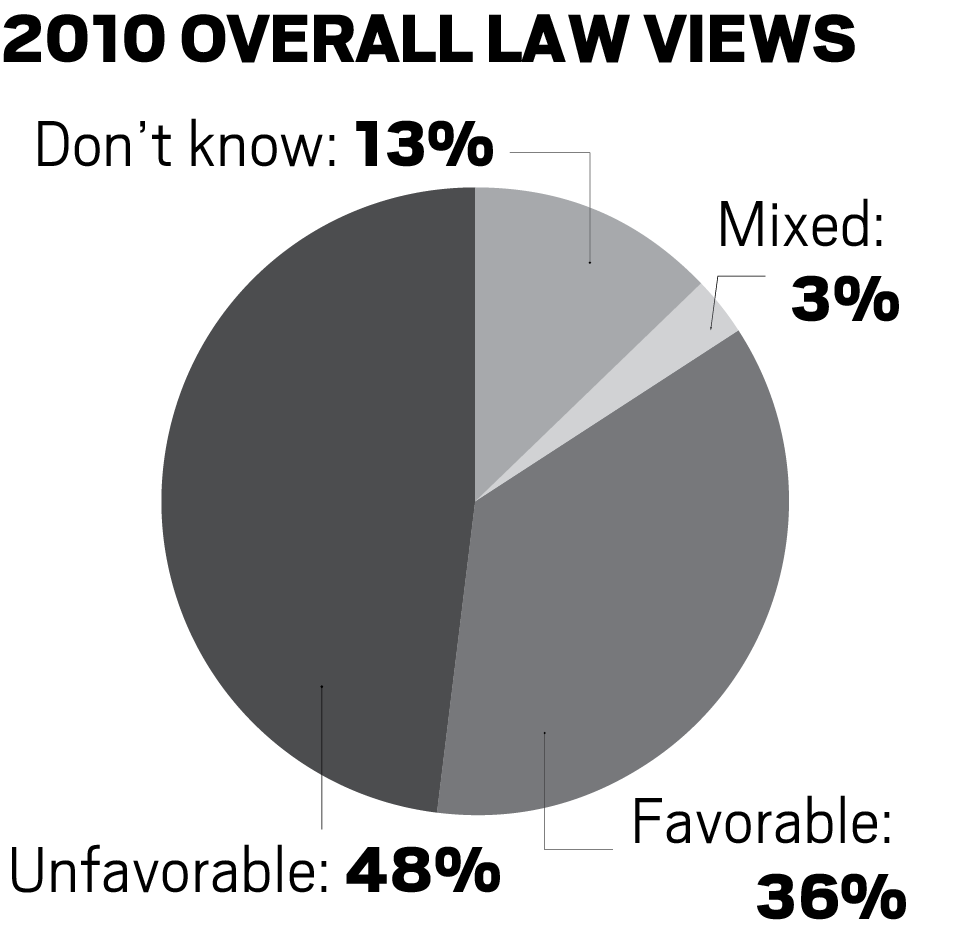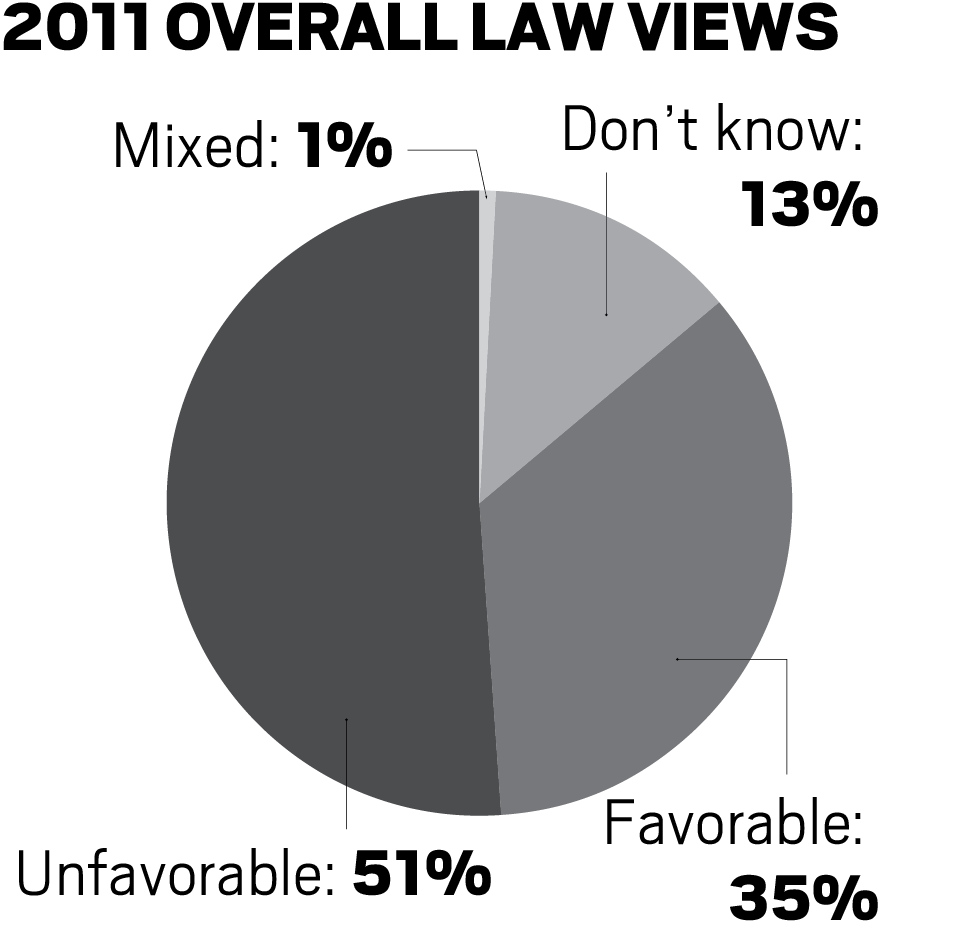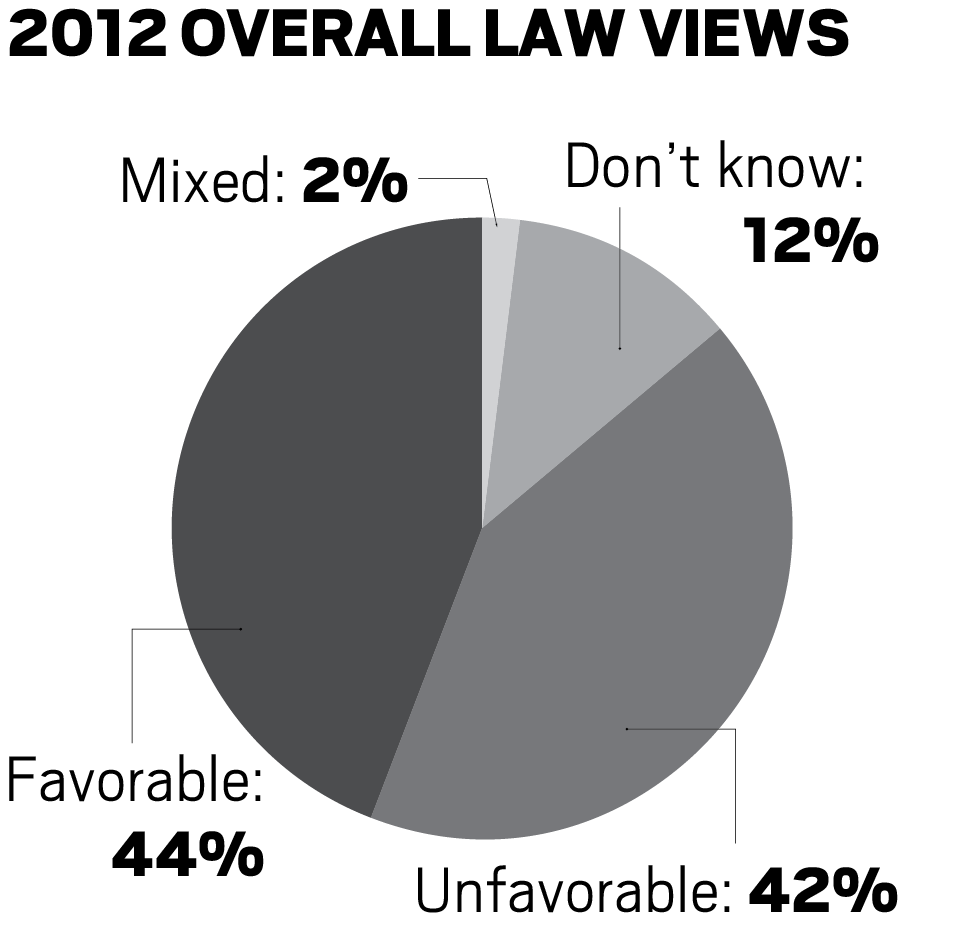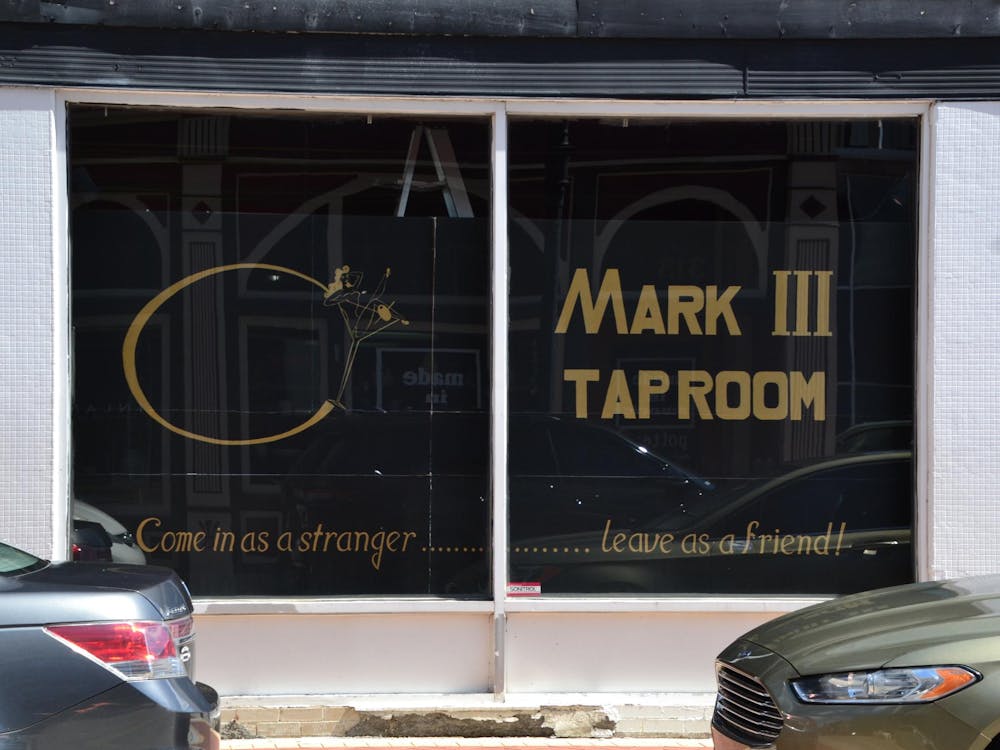HOOSIER VIEWS ON AFFORDABLE CARE ACT
A recent Ball State study found that Hoosiers have widespread support for key elements of the Affordable Care Act. While the key elements found more favorable views, the overall support is still low. However, this number of favorable views has risen in the past three years.



DN GRAPHIC ASHLEY DYE
SOURCE: “Health Care Reform:
Understanding Individuals’
Attitudes and Information Sources”
Hoosier support for the Affordable Care Act is growing, according to a new study.
Although residents remain divided on the law, the Ball State study found there is widespread support for its key elements.
“Breaking it down to its components, you can see people really do support and consistently support many elements of health care reform,” said Carolyn Shue, lead author of the study and an associate professor of communication studies.
Those elements included making coverage affordable, ensuring coverage for everyone, mandating that pre-existing conditions be accepted by insurance companies, providing coverage for children until age 26 and the individual mandate, which requires people to purchase health insurance. Each of these elements received large support, with the individual mandate receiving the lowest amount of support at 63 percent.
From 2010-2012, the number of Indiana residents who said they favored the reform law as a whole increased from 36 percent to 44 percent. The number of Hoosiers with unfavorable views decreased to 42 percent in 2012.
The three-year study, “Health Care Reform: Understanding Individuals’ Attitudes and Information Sources,” conducted the poll over cellphones and landlines with 600 individuals surveyed each year. The study used data from the Ball State Bowen Center for Public Affairs’ annual Hoosier Survey, a poll of Indiana residents 18 and older on public policy issues.
The Patient Protection and Affordable Care Act was signed into law in 2010, but portions of the bill have only recently begun to take effect. Shue said she believes that attitudes will grow more favorable toward the law as people become more informed on the legislation and how it will affect them.
But for now, she attributes the discrepancy in support for the Affordable Care Act’s and its individual components to its politically charged nature. She said the nickname for the law, “Obamacare,” comes with a political image.
“Those words that we use are so emotionally charged,” Shue said. “When people start talking about it as Obamacare, then people don’t think about it in the actual factors, they think about it from their political position.”
An equal portion of respondents in the survey identified themselves as Republican, Democrat and Independent.
“It continues to be volatile,” said Joseph Losco, co-director of the Hoosier Poll and chairperson of the Ball State political science department.
Losco attributes the negative uptick to the law’s poor rollout. In 2013, the Obama administration was plagued with technical issues as Healthcare.gov experienced crashes, delays and other glitches. And later on, the president issued an apology to Americans who were losing their insurance policies after repeated assurances that they could keep their plans.
However, Losco said the tide is turning in favor of the law, citing the declining number of people arguing for it to be repealed. The 2013 Hoosier Survey found that 51 percent of residents wanted to repeal the law.
“Major insurers who were first opposed to it are now scrambling to make sure they are among the providers that are in the online marketplace,” he said. “... In the long run, I think you will see general acceptance, even among the political clashes we are seeing now.”
The study also found equivalent percentages of insured and uninsured respondents going to the ER at least once during the past 12 months. In 2011, 29 percent of insured residents visited the ER versus 30 percent of the uninsured, up from 27 percent and 29 percent in 2012, respectively.
“The one myth it does tend to bust, though, is that utilization of the emergency room will decrease when you have more numbers of insured people,” Losco said. “That was the hope by some people in proposing some elements of the ACA.”
The study also found that insured residents were 30 percent more likely to visit a doctor in a year’s time than their uninsured counterparts. Shue said with these findings, the debate could focus on the costs of the law, since visiting a physician is a cheaper access point to health care than expensive procedures in the ER.
“So now, hopefully, if more people have access, they are going to take advantage of those primary care services and we’re going to have a healthier country,” she said.
However, Shue said with more insured people, the country needs to figure out if it will have enough resources for people’s access to health care.
“So it opens up a lot of questions that we still have to grapple with as people move forward with implementation of the policy,” she said.
Those questions are pivotal, especially ahead of the midterm elections this fall, where the Affordable Care Act is estimated to be a significant factor in many races.
But Losco estimated that the debate on the merits of the law will give way to how best it should be implemented, similar to the change of course in Indiana from failed attempts to expand Medicaid in the state.
A current Gov. Mike Pence campaign wants to pass an alternative to Medicaid, Healthy Indiana Plan 2.0, which would be funded primarily with federal dollars.




